Invented by Zhenkun Song, Quan Yang, Hongzhen Xue, BOE Technology Group Co Ltd
The Maximum Connected Domain Marking Method is a cutting-edge technology that allows for efficient and accurate tracking of objects in real-time. This method utilizes advanced algorithms and computer vision techniques to identify and mark objects within a specific domain. It has applications in various sectors such as manufacturing, logistics, and retail, where tracking and monitoring objects are crucial for operational efficiency.
The Target Tracking Method is another technology that has gained traction in recent years. It enables precise tracking of moving objects, such as vehicles or individuals, using sensors and advanced algorithms. This method finds applications in diverse industries, including transportation, security, and sports. For instance, in the automotive industry, target tracking is used for autonomous vehicles to detect and follow other vehicles on the road.
The market for Augmented Reality (AR) and Virtual Reality (VR) apparatus is also experiencing rapid growth. AR and VR technologies offer immersive and interactive experiences by overlaying digital content onto the real world or creating entirely virtual environments. These technologies have found applications in gaming, entertainment, education, healthcare, and many other sectors. The demand for AR/VR apparatus is driven by the increasing adoption of these technologies in various industries, as well as the growing popularity of AR/VR-based applications and games.
The integration of Maximum Connected Domain Marking Method, Target Tracking Method, and AR/VR apparatus opens up new possibilities for businesses and consumers alike. For example, in the retail industry, these technologies can be combined to create interactive shopping experiences. Customers can use AR/VR headsets to visualize products in their own homes, while the target tracking method ensures accurate placement of virtual objects in the real world. This enables customers to make informed purchasing decisions and enhances their overall shopping experience.
Furthermore, these technologies have significant potential in the field of education. The combination of target tracking and AR/VR apparatus can create immersive learning environments, allowing students to interact with virtual objects and gain a deeper understanding of complex concepts. Maximum connected domain marking method can also be utilized to track and monitor student progress, providing personalized feedback and enhancing the learning process.
In conclusion, the market for Maximum Connected Domain Marking Method, Target Tracking Method, and Augmented Reality/Virtual Reality Apparatus is witnessing remarkable growth due to the increasing demand for advanced technologies in various industries. These innovative solutions offer numerous benefits, including improved operational efficiency, enhanced user experiences, and new opportunities for businesses. As technology continues to advance, we can expect further developments and applications of these technologies in the future.
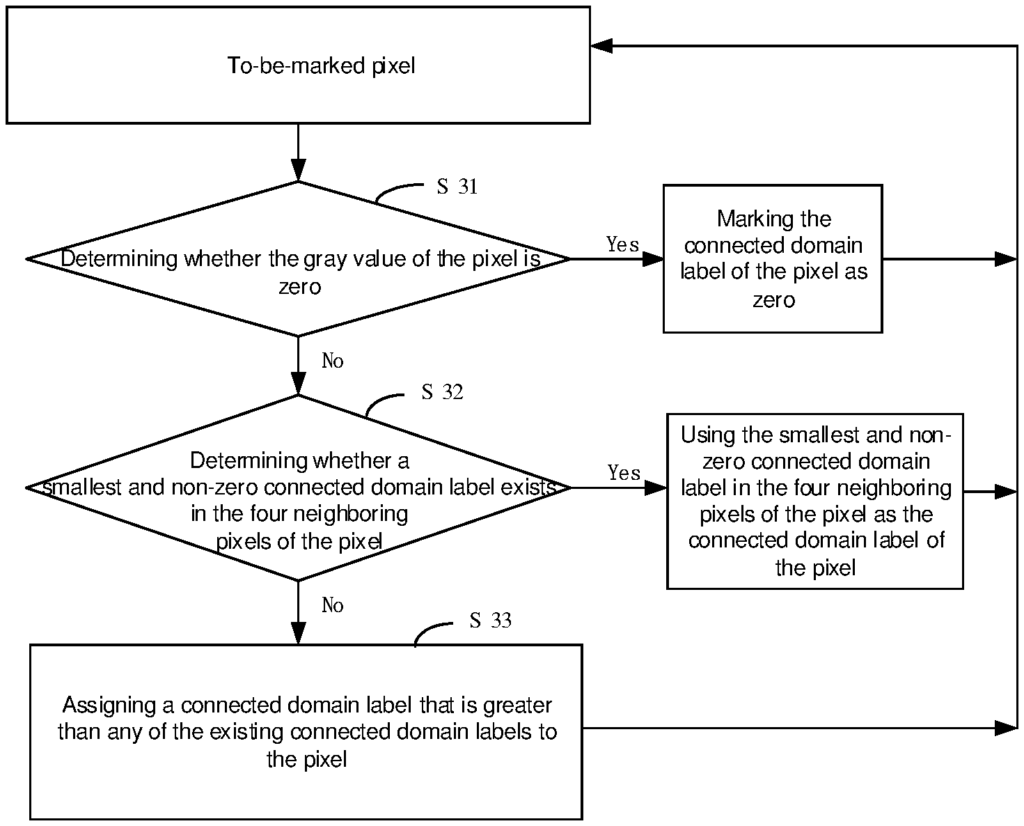
The BOE Technology Group Co Ltd invention works as follows
The present disclosure provides a method for obtaining the maximum connected area. It also includes a target tracking method, an AR (Augmented Reality), and a VR (Virtual Reality). The maximum connected-domain marking method includes: marking the connected domains in pixels of a binary picture and recording the equivalent relationship; merging the equivalent connections according to these equivalent relationships for pixels that have the equivalent relationship in the marked results, counting the pixels in each merged connection; determining the connected-domain label for the maximum connectable domain based on this counted number; and determining the coordinates of boundary pixels within the maximum connected area based on this connected-domain label.
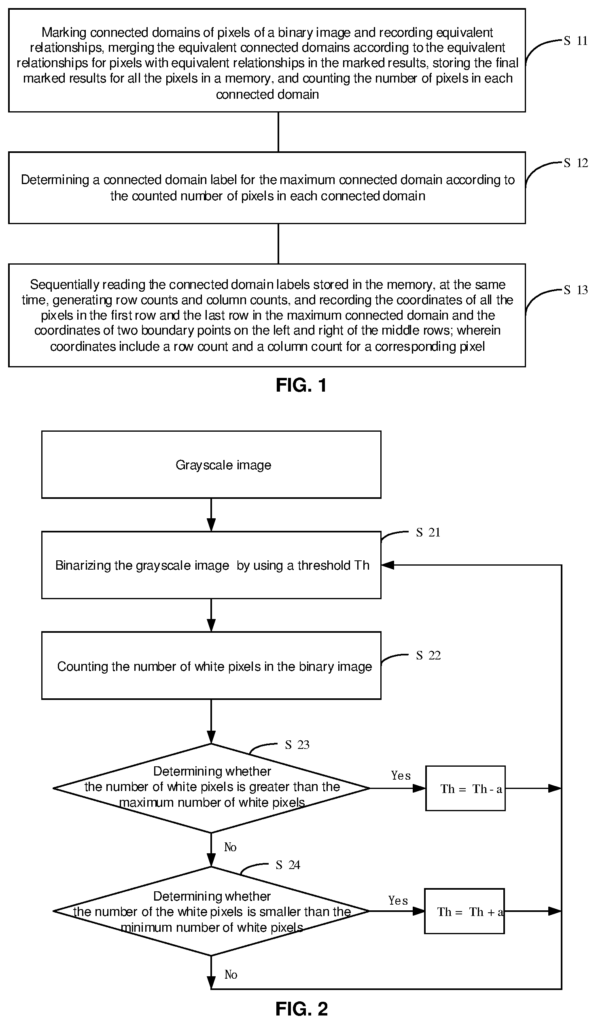
Background for Maximum connected Domain Marking Method, Target Tracking Method, and Augmented Reality/Virtual Reality Apparatus
Connected Domain Marking is an important step for machine vision, tracking, and target recognition applications. The connected domain marking’s purpose is to identify connected areas within a binary image, and then assign a label for each area.
At the moment, the connected domain marking can only be obtained by obtaining the centroid position of all connected domains, or only all connected domains are marked.
The embodiments of this disclosure provide a method for marking a domain with the maximum number of connected points, a method to track targets and an AR/VR (Augmented Reality/Virtual Reality), apparatus.
According to a first aspect, the present disclosure provides a method for marking the maximum connected area. This includes marking the connected areas of pixels and recording equivalent relationships; merging the equivalent results according to the equivalent relationship for pixels; storing the final results marked for all pixels in a computer memory; counting the number pixels within each connected area; determining the connected label for the maximum-connected domain based on the counted pixels; simultaneously generating the row counts and columns counts; and recording the coordinates for all pixels in the first and last
The following may be included: marking connected pixels of pixels from a binary picture and recording equivalent relations, merging the equivalent pixels according to equivalent results in marked results and counting the numbers of pixels within each connected area.
In some embodiments, the binary image can be obtained by binarizing the grayscale image with an adaptive threshold binarization technique.
The threshold of the previous image is used to binarize the grayscale images of previous frames. If the number is less than the minimum amount of white pixel, the threshold of the prior frame plus a can be used as the threshold of the current image for binarizing grayscale images of present frame.
The present disclosure may allow marking connected labels on pixels by: determining if a pixel’s gray value is zero. If the gray is not zero, the pixel will be marked with the smallest non-zero connected label from four adjacent pixels. Otherwise, the pixel would receive a label greater than the other connected labels.
In some embodiments, recording equivalent relationships can include: determining if the connected labels of pixels with coordinates (x?1,y+1) and (x?1,y?1) are zero respectively when the connected label of pixel with coordinate (x?1,y+1) is not zero. If not zero and the connected labels of corresponding pixels are not equal to the pixel with coordinate (x?1,y+1), recording the relationship equivalent between the two domain labels.
According to some embodiments, updating the domain labels for the pixels of the (i?)th row based on the inter-row relationships between pixels of the (i?)th row and pixels of the ith rows may include changing the greater connected label of the pixel of the (i?)th row to a smaller equivalent connected label. Updating the domain labels for the pixels of the ith column based on the intra-row relationships between pixels of the ith section may include changing the greater connected label of the pixel of the it
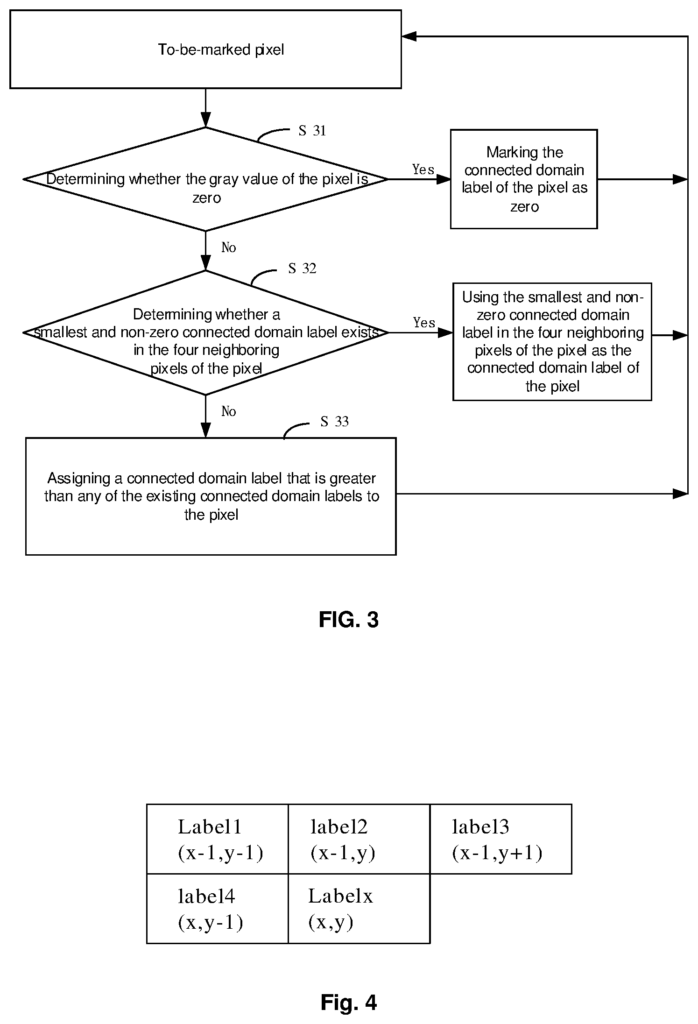
In some embodiments, the update of the connected-domain labels for pixels of the (i?)th row based on the inter-row-equivalent relationships between pixels of the (i?)th row, the pixels of the (i?)th row, and pixels of the ith-row may include: When marking the connected-domain labels for pixels of the (i?)th row, recording the equivalent relationship, transferring connected-domain labels of pixels of the (i?)th row between two shift registers and updating the connected-domain
Before marking the connected pixels of pixels on the (i+1),th row, and recording equivalent relationships between pixels of the (i+1),th row, updating connected domain label of pixels of the ith column according to intra-row equal relationships between pixels of the ith cell may include: transferring the linked domain labels between two shift registers once, then updating the connected labels between pixels of the ith cell according to intra-row similar relationships between pixels of the ith cell.
In some embodiments, the marked results may include: “Counting the number of pixels within each connected domain, and storing them in memory.
S1″: In the scan stage of the first line of pixels, traversing each pixel from left to right, marking connected domain labels and recording equivalent relationships. Then sequentially entering the initial marked results into a first shiftregister;
S2″: In the scan stage of the second line of pixels, traversing each pixel from left to right, marking connected domain labels and recording equivalent relationships and sequentially putting the marked results into the first shift-register, while an output terminal in the shift-register sequentially outputs initial marked results for the pixels of the first column, updating the connected labels according to inter-row equivalent relations between the pixels of the first and second rows, to obtain the final marked results, and sequentially putting the same in a second shift
The following is an example of how to implement the “S3” stage.
S4″: In the scan stage of the third column of pixels, traversing each pixel from left to right, marking its connected domain label and recording equivalent relationships; at the same, the output terminals of the two shift registers sequentially output the intermediate marked results for the pixels of the second column; updating the connected labels of the pixel in the 2nd row according to inter-row equivalent relations between the pixels of the 2nd row and pixels of the 3rd row to obtain the final marked results, and sequentially putting
The following is an example of how to implement the “S5” method.
wherein S4 and S5 are performed for each successive row of pixels. Wherein, upon traversing the Mth column of pixels, the initial results marked for the pixels of the Mth column are sequentially inputted into a non zero shift register, 4MN?N. The number of pixels in all connected domains are obtained until the final results marked of the pixels of the last row is stored in memory.
In some embodiments, after the grayscale image is binarized to produce the binary image, the method can include performing noise reduction and cropping on the grayscale picture.
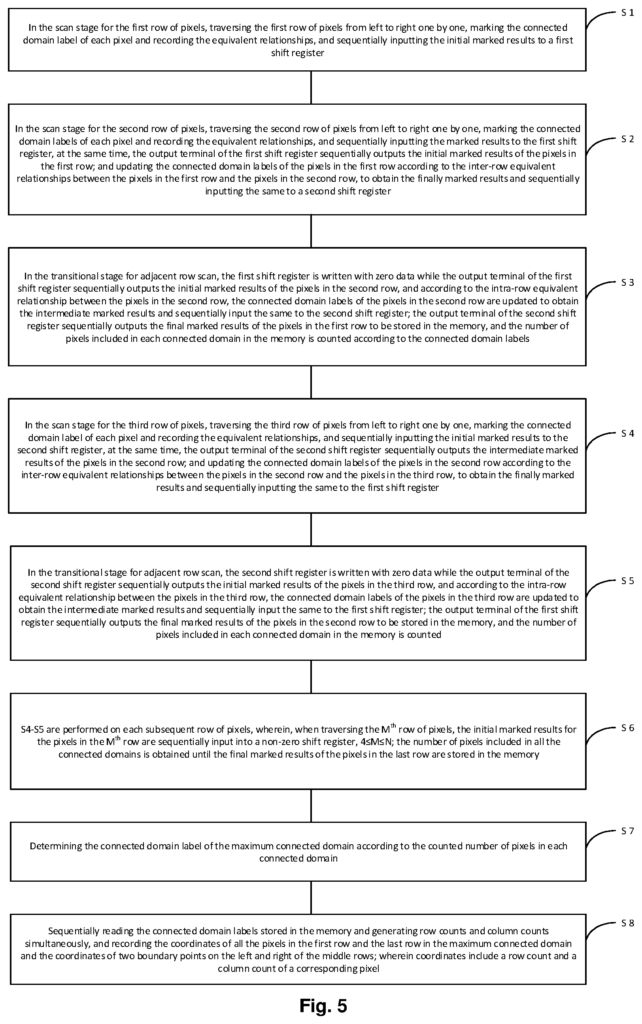
In some embodiments, after marking connected domains and recording equivalent relationships on the binary images, the method can include further: performing erosion and distortion processing on the binary images.
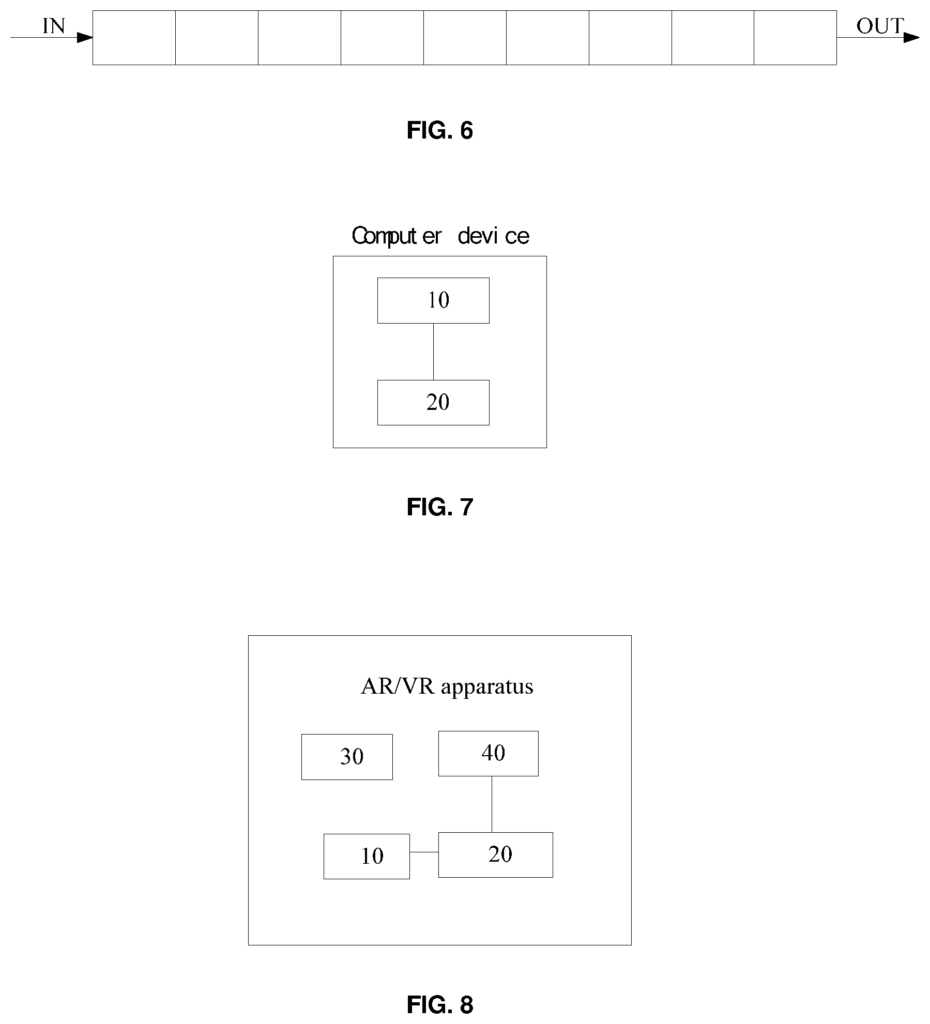
Click here to view the patent on Google Patents.
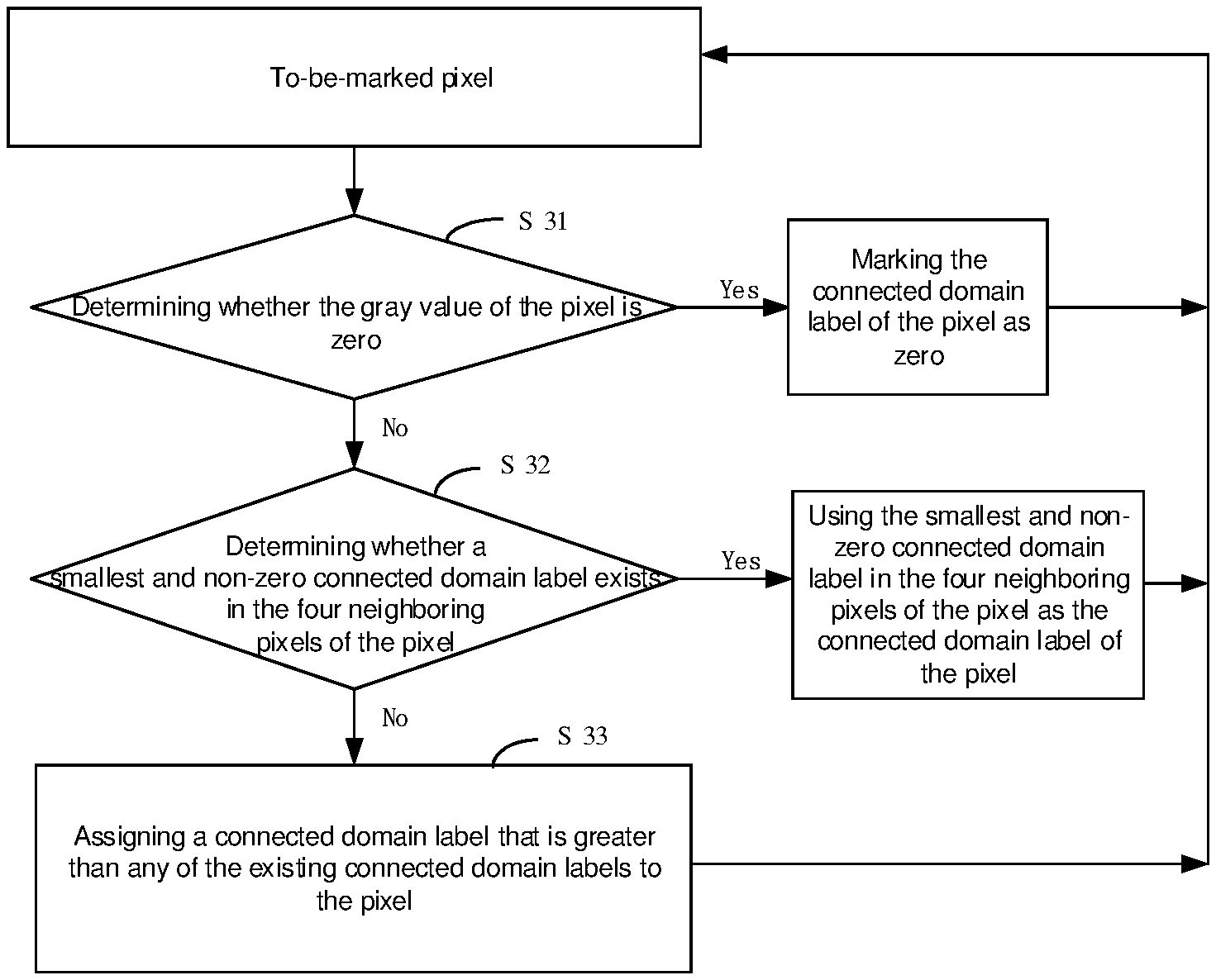
Leave a Reply